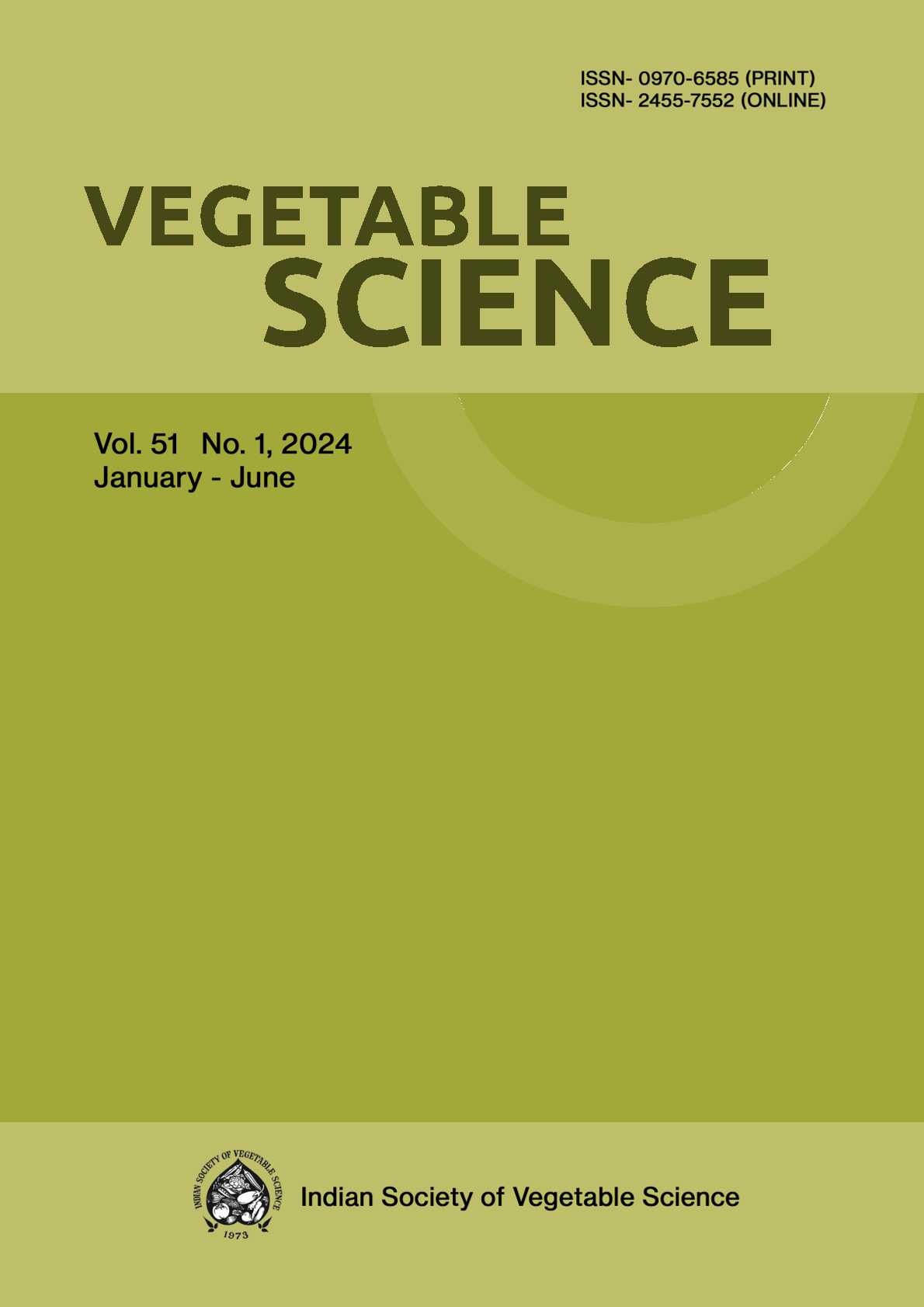Current Status of Bacterial Diseases of Vegetable Crops
DOI:
https://doi.org/10.61180/vegsci.2024.v51.spl.10Keywords:
Bacterial disease, bio-control, biovars, race, pathogen, variability.Abstract
Emerging bacterial plant diseases became a major threat for the vegetable production system. In the recent past, with changes in farming practices, abrupt weather climate, and the introduction of new varieties and hybrids are considered major factors for the emergence and outbreak of new bacterial pathogens (diseases). The bacterial wilt is an emerging threat for the cultivation of almost all the solanaceous vegetables caused by Ralstonia pseudosolanacearum in India. Incidence of more emerging bacterial diseases in vegetable crops viz tomato leaf blight (Xanthomonas axenopodis pv vesictoria) up to 20% and fruit canker- (Corneybacterium michiganens) up to 5%, bacterial speck (Pseudomonas syringae); brinjal little leaf of brinjal (phytoplasma) up to 40%, cabbage and cauliflower black rot (X. compestris pv compestris) up to 10% and summer squash soft rot and wilting (Erwinia spp.) up to 20% on summer sqash and 19.5% on cauliflower has been recorded. It clearly revealed the cross-infectivity of the bacterial pathogen, indicating the emergence of these pathogens as a broad spectrum covering a wide host range. Future research in this field will include a better understanding of the molecular basis of variability in the pathogen, pathogenesis, accurate and reliable diagnostic of the disease and to engineer novel and durable protection strategies against devastating post-harvest diseases of vegetable crops.
Downloads
Published
Issue
Section
License

This work is licensed under a Creative Commons Attribution-NonCommercial-NoDerivatives 4.0 International License.






